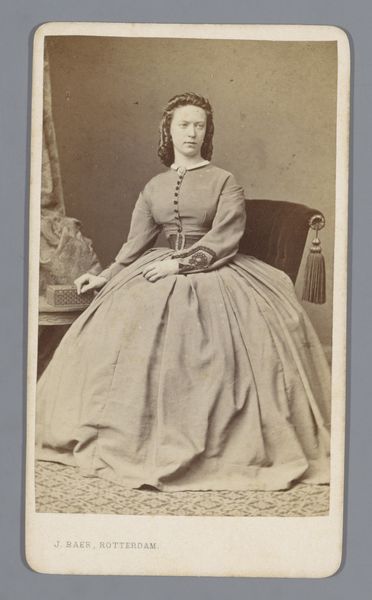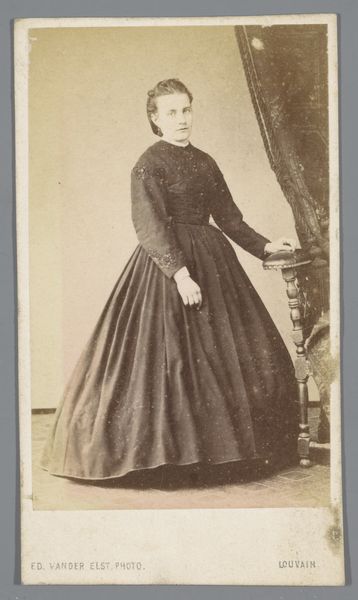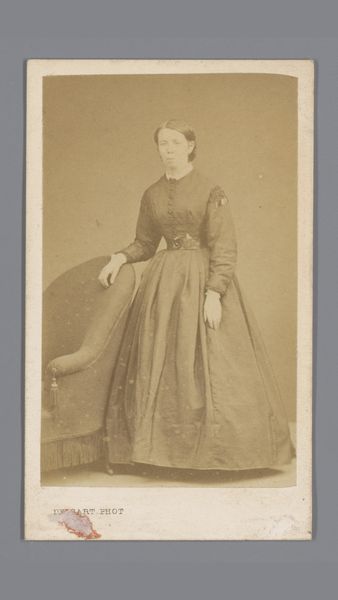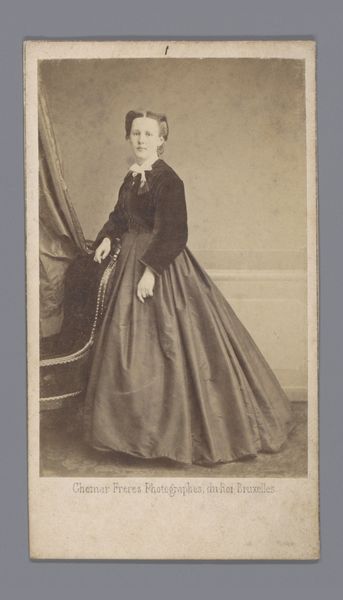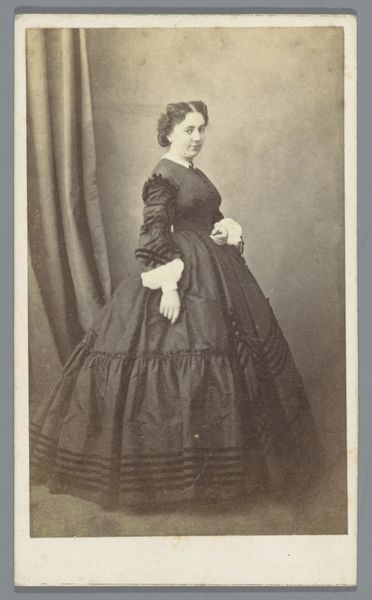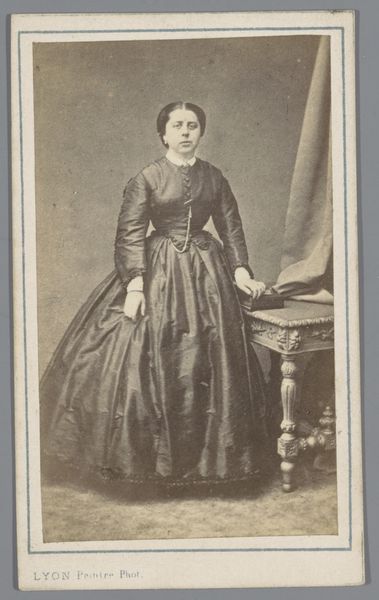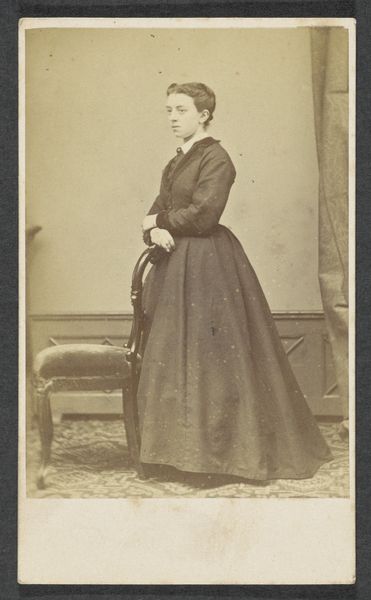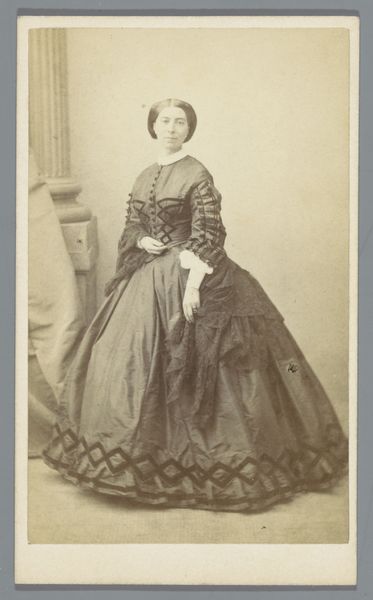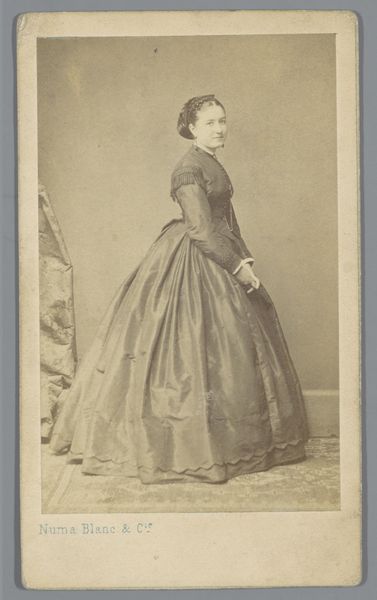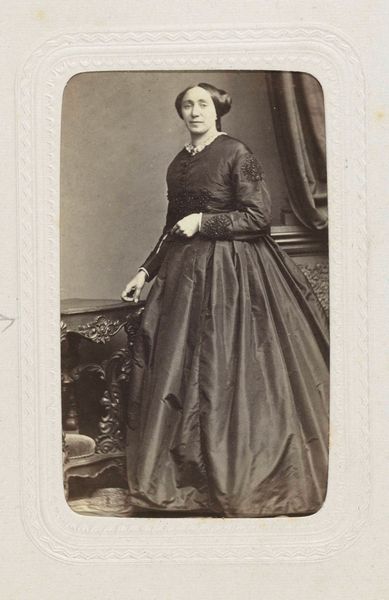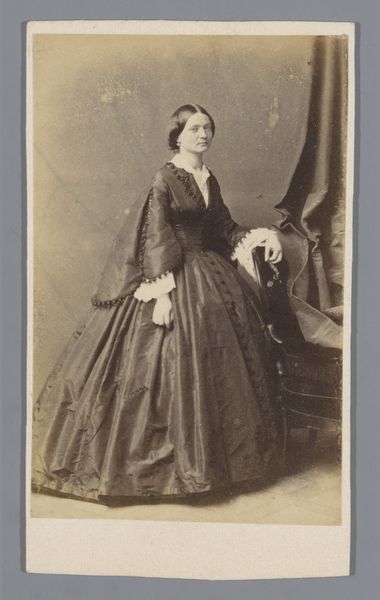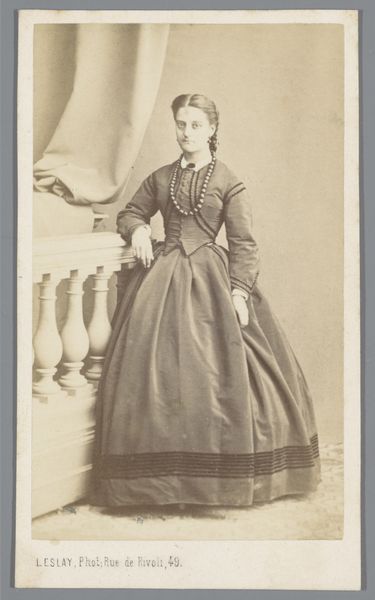
daguerreotype, paper, photography
#
portrait
#
daguerreotype
#
paper
#
photography
#
framed image
#
paper medium
Dimensions: height 104 mm, width 59 mm
Copyright: Rijks Museum: Open Domain
Curator: Looking at this portrait, there's something profoundly still about it, a captured breath of a moment in time. Editor: Indeed. We are observing a photograph, more specifically a paper daguerreotype by Ghémar Frères, produced between 1859 and 1885, titled "Portret van een onbekende vrouw," or "Portrait of an Unknown Woman." Curator: Unknown! It’s a beautiful melancholy that the sitter's identity is lost, only her image remains—it becomes a reflection on fleeting existence. Did she have any idea how much history her clothes were holding when she put on that crinoline? Editor: Her dress, made with particular craft, tells of complex global networks of material exchange and exploitation. Consider the labor that went into producing the fabric, dyeing it, and shaping it into such an intricate form. Curator: Absolutely. Yet despite its sober colors, that gown whispers of fashion's delicate dance—the frills at the hem a frivolous counterpoint. It almost softens the stern expression on the subject’s face, or is it simply a play of shadows across a life we can no longer know? Editor: The materiality speaks volumes. This daguerreotype—the paper, the photographic chemicals, the frame itself, reveals an industrializing world where even portraiture becomes another form of manufacture and commodification. Curator: Perhaps. But to consider only the mechanics is to forget this moment, suspended. That faint, almost defiant spark in her eyes seems utterly untouched by any commodification! Isn't it extraordinary how she comes down to us this way, as much question as artifact? Editor: Even that question stems from specific material conditions and the context in which photographic practices were rapidly evolving. I mean, think about the number of portraits this firm would have churned out for income versus personal artistic expression. Curator: A business that somehow manages, as the best art always does, to open up all that silent speculation on time, death, even who this very particular person happened to be. And suddenly the value, beyond material, feels almost overwhelming. Editor: Ultimately, both this specific history and our interpretation of it rely heavily on these tangible clues –the textures of her clothes, the evidence of its making, and the social currents circulating in its era. A history recorded through its matter. Curator: So then maybe it's the way she's caught in this material web that lends the portrait its resonance and that singular feeling of captured breath. Thanks to this breath and insight into materials, I believe her fleeting existence will become perennial in some way. Editor: Precisely. And it is this intersection that reveals the photograph's ongoing story – in the intersection between personhood, commodity and history.
Comments
No comments
Be the first to comment and join the conversation on the ultimate creative platform.
